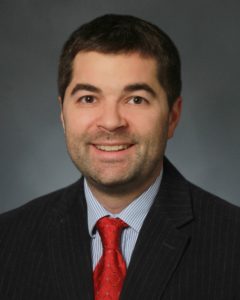Nathaniel Warner is currently an Assistant Professor at The Pennsylvania State University in the Department of Civil and Environmental Engineering. Previously, Dr. Warner received a BA from Hamilton College where he majored in Geology, an MS in Hydrogeology from Miami University in Oxford, Ohio and a PhD in Earth and Ocean Sciences from Duke University. He was the Joseph B Obering Postdoctoral Fellow, Dartmouth College, Department of Earth Sciences from 2013-2015. His current research focuses on using B, Sr, and Ra isotope geochemistry to better understand the processes controlling 1) salinization of freshwater 2) the fate and transport of metals in oil and gas produced waters once released to the environment, and 3) treatment technologies for oil and gas produced waters. Dr. Warner’s lab group has used Sr and Ra isotopes to trace the accumulation of metals associated with oil and gas wastewaters in both sediment and freshwater bivalves. His work has been published in Proceedings of the National Academy of Sciences-USA, Environmental Science and Technology, Applied Geochemistry, Geochimica et Cosmochimica Acta, Chemical Geology and Environmental Science: Processes and Impacts.
Read Dr Nathanial Warner’s Emerging Investigator article “Radium accumulation in carbonate river sediments at oil and gas produced water discharges: implications for beneficial use as disposal management” and read more about him in the interview below:
Your recent Emerging Investigator Series paper focuses on radium accumulation in carbonate river sediments at oil and gas produced water discharges. How has your research evolved from your first article to this most recent article?
Based on the results from the first article we expected oil and gas discharges to behave in a similar way, but that was not the case with our recent findings. Instead of radium being associated with barite (which is commonly discussed in the literature) in the most recent study we found the control on radium in sediments was the carbonate precipitation. This leads us to think that each oil and gas basin has varying geochemistry of its produced waters and each could have a different story to tell about fate and transport of radium (or other contaminants of concern) once discharged to the surface.
What aspect of your work are you most excited about at the moment?
Treatment technologies for the high salinity brines. It’s a challenge, but breakthroughs and the chance to make a big difference in how these waters are managed is exciting.
In your opinion, what are the most important questions to be asked/answered in this field of research?
How do we get radium out of high salinity fluids in an economic way? And where does the radium ultimately end up once released to the surface?
What do you find most challenging about your research?
Environmental samples, especially for radium often have large natural variations that can make clear trends or impacts difficult to quantify. We therefore need to make multiple measurements on a variety of samples to get at a reliable data set.
In which upcoming conferences or events may our readers meet you?
Goldschmidt – Barcelona and WRI16 – Siberia
How do you spend your spare time?
Outdoor activities, biking hiking, running.
Which profession would you choose if you were not a scientist?
Astronaut- but I suppose most of those folks are scientists…. How about an artist? I really enjoy creating things with my hands so maybe I would be sculpting.
Can you share one piece of career-related advice or wisdom with other early career scientists?
Don’t give up on your career goals, but also don’t be afraid to take an indirect path to get there. All of the experiences along the way will make you a better researcher.











